
The 1950s, often perceived through a nostalgic lens of poodle skirts and wholesome television, was in reality a crucible of immense and often contradictory change. Emerging from the shadow of World War II, the United States and the world plunged into a new era defined by both burgeoning prosperity and pervasive anxieties. This pivotal decade laid down foundational structures, challenging old norms while simultaneously cementing new ones, making it an endlessly fascinating period for historical analysis.
From the global power plays of the Cold War to the intimate transformations within American households, the 1950s pulsed with a dynamic energy. It was a time when the very fabric of society was being rewoven, introducing revolutionary technologies and cultural expressions that continue to resonate today. The superficial calm often associated with the era belied a relentless undercurrent of societal shifts and international tensions.
In this expert guide, we will meticulously unpack the forces that propelled the 1950s into an era of unprecedented evolution. Much like a seasoned engineer dissects a complex machine, we will analyze the key components – the geopolitical maneuvering, the cultural explosions, the economic engines, and the burgeoning social movements – that together shaped the modern world. Prepare for a detailed and enthusiastic journey through a decade that was anything but static.

1. **The Cold War and Red Scares: A Global Ideological Divide**The most defining element of 1950s culture and global affairs was undoubtedly the ever-increasing tension between the Soviet Union and the United States. This ideological standoff, born from the power vacuum and geopolitical realignments following World War II, pitted capitalism and democracy against communism. Leaders in the West, particularly in large capitalist countries like the United States, claimed that the USSR had “expansive tendencies,” viewing the spread of communism as a direct threat to the global influence the United States had recently established.
This perception gave rise to the strategy of “containment” by the US and its allies, an extensive effort through diplomacy, veiled threats of nuclear action, and a series of proxy wars to prevent communist countries from colonizing and expanding their sphere of influence. The world effectively split into Western and Eastern blocs, with an “Iron Curtain” dividing communist East from capitalist West, dramatically exemplified by the partitioning of Germany with East Germany under Soviet control.
Domestically, this global paranoia manifested as the “Red Scare,” a period of widespread fear and suspicion within America itself. Senator Joseph McCarthy spearheaded a campaign against supposed communist infiltration, claiming to possess lists of communist spies within the government. The House Un-American Activities Committee (HUAC) held hearings to root out communists, targeting individuals in entertainment, education, and government.
This intense witch hunt, unfortunately, caused significant hardship for many Americans who were accused, some losing their jobs or being blacklisted, despite little to no evidence. The public tolerated this intense scrutiny until McCarthy’s baseless accusations turned on the armed forces. By 1954, he was censured by his Senate colleagues, and the HUAC’s hearings ceased, but the Red Scare left an indelible mark of panic on the nation’s collective psyche, ensuring the Cold War would continue on a less publicly accusatory, but equally intense, level.
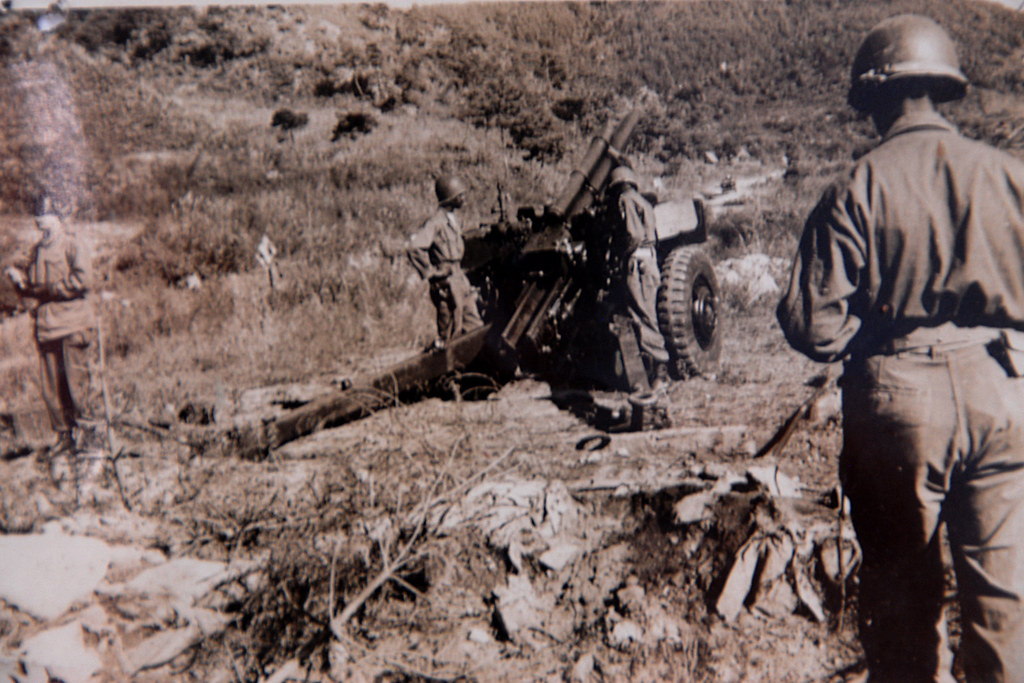
2. **The Korean War: A Cold War Flashpoint and the Perils of Proxy**Containment took its most direct and devastating form at the beginning of the decade with the outbreak of the Korean War in June 1950. This conflict marked the first major military clash of the Cold War era, beginning when approximately 75,000 troops from the North Korean People’s Army invaded South Korea, encroaching on the pro-West Republic of Korea. The Democratic People’s Republic of Korea (North Korea) was backed by the USSR, making the invasion a direct challenge to American-led efforts to halt communist expansion.
The United States swiftly led a United Nations force to support South Korea, while China and the Soviet Union provided crucial backing to North Korea. This international involvement transformed a regional conflict into a global ideological battleground. The war lasted three brutal years, causing massive destruction and the deaths of millions of people, devastating both North and South Korea and highlighting the destructive potential of Cold War proxy conflicts.
In 1953, an armistice was signed, which created a tenuous peace and established a new border, notably the Demilitarized Zone (DMZ) along the 38th parallel. However, no official peace treaty ever followed, meaning the Korean peninsula remains technically in a state of war to this day. This division continues to make Korea a significant focal point of international tension, a stark and enduring legacy of the 1950s Cold War strategy. President Truman justified American troop involvement not as a formal declaration of war, but as a necessary “police action.”

3. **The Television Era: A New Hearth for the American Home**The 1950s are widely celebrated by some as the “Golden Age of Television,” a decade that witnessed the astonishing rise of TV as the primary source of entertainment and information for most Americans. Television sets became increasingly affordable, leading to a tremendous surge in ownership; by 1950, 4.4 million families in America had a television set, and by 1960, nearly 90% of households owned one. This rapid adoption fundamentally revolutionized the way Americans saw themselves and the world.
This newfound fascination with the small screen profoundly impacted American cultural habits. People dedicated the majority of their free time to watching television broadcasts, which, in turn, led to a noticeable drop in movie attendance and a decline in the number of radio listeners. Television’s influence extended far beyond mere entertainment; as the context points out, “Television affects what we wear, the music we listen to, what we eat, and the news we receive.”
The decade saw the emergence of iconic and beloved shows that are still remembered today. Classics like “I Love Lucy,” “The Adventures of Ozzie and Harriet,” and “Father Knows Best” captivated audiences during this original Golden Age. Other popular programs included “The Ed Sullivan Show,” “The Lone Ranger,” “The Mickey Mouse Club,” and “Alfred Hitchcock Presents.” The introduction of color TV in 1953 added vibrancy to broadcasts, while the explosion of TV advertising began to powerfully influence consumer habits and popular culture, further cementing television’s central role in American life.
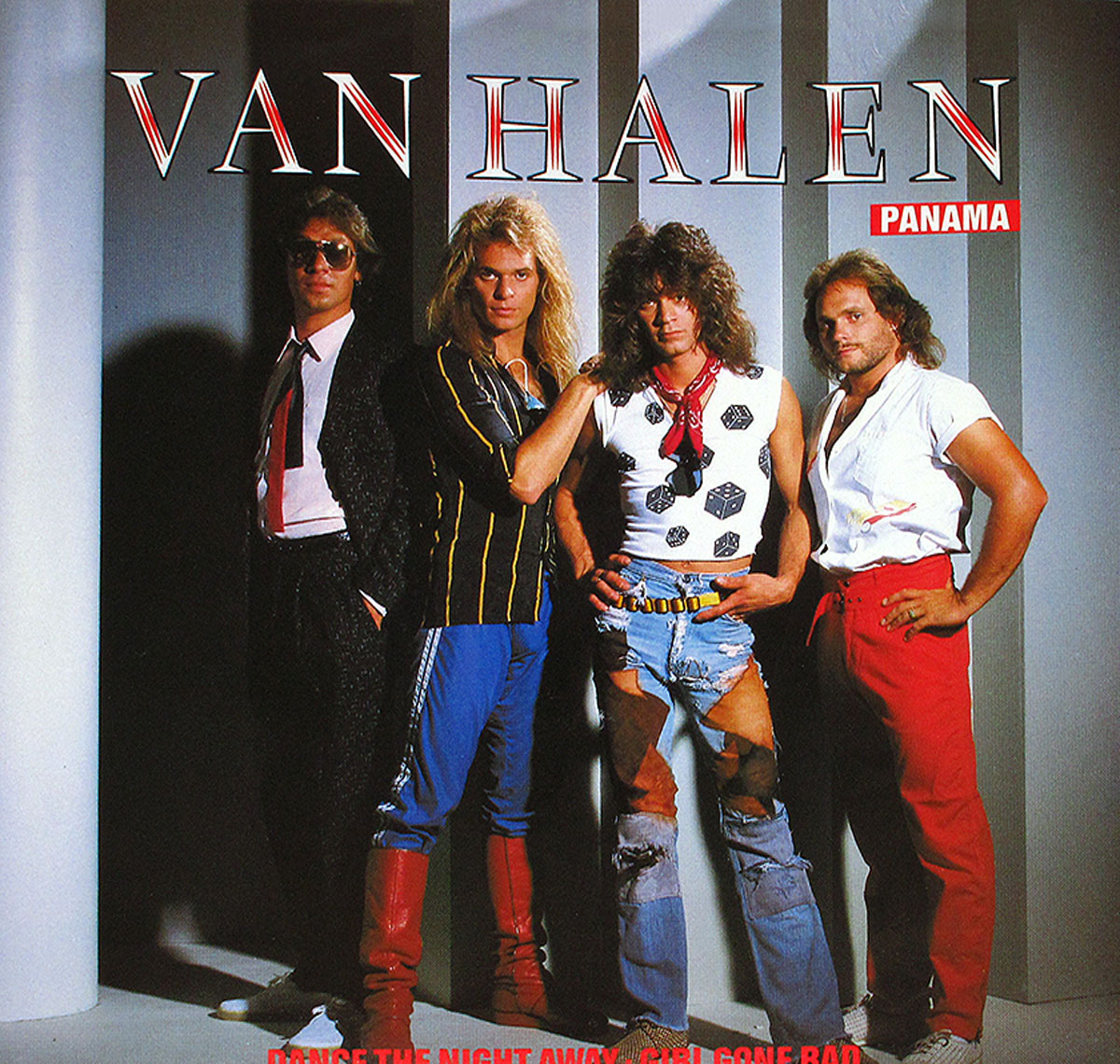
4. **The Birth and Boom of Rock and Roll: Soundtracking a Youthful Rebellion**The 1950s truly marked the genesis of the rock and roll music genre, a revolutionary sound that exploded onto the cultural scene and indelibly shaped the decade. This electrifying new style blended elements of rhythm and blues, country, and pop music, creating a vibrant and rebellious sound primarily targeted at the burgeoning teenager market. This demographic, emerging as a distinct entity for the first time due to growing prosperity, readily embraced the genre as its anthem.
The era was defined by trailblazing figures who would become legends. Elvis Presley, with his energetic performances and rebellious image, quickly rose to become the “King of Rock and Roll.” He led the charge alongside other influential artists such as Chuck Berry, whose songs like “Maybellene” (1955) and “Johnny B. Goode” (1958) refined rock and roll’s distinctive elements, focusing on teen life and introducing guitar solos and showmanship that profoundly influenced subsequent rock music. Little Richard, Jerry Lee Lewis, and Buddy Holly also played crucial roles in this musical revolution.
This powerful new music dramatically altered the popular music landscape. Crooner sounds, which had dominated the early 1950s with artists like Frank Sinatra and Perry Como, found their access to the pop charts significantly curtailed as rock and roll swept in. The new music, however, sparked concerns among some adults who worried about its influence on youth culture, even leading to accusations of it being a “communist-orchestrated scheme to corrupt the youth,” despite its inherently market-based and capitalistic nature. Alongside rock and roll, doo-wop also entered the pop charts and gained considerable popularity.
Tragically, the era of 1950s rock and roll is often marked by “The Day the Music Died,” when a chartered plane carrying Buddy Holly, Ritchie Valens, and J. P. “The Big Bopper” Richardson crashed in 1959. This event, coupled with Elvis Presley’s conscription into the US Army, symbolized a turning point, though the groundwork for future musical explosions like surf rock was already being laid.
5. **Post-War Economic Prosperity and the Rise of Consumerism**Following the global devastation of World War II, the United States experienced an unparalleled economic boom in the 1950s, effectively ending the Great Depression. This period was characterized by rapid economic growth and technological advancements, which translated into a significant increase in living standards for many Americans. The U.S. economy, fueled by sustained production and a burgeoning consumer base, emerged as a global powerhouse.
This prosperity led to a dramatic expansion of the middle class, as wages rose and prices remained relatively low. The introduction of credit cards provided a new mechanism for purchasing, allowing people to “buy now and pay later,” which further fueled a massive explosion in consumerism. Families eagerly purchased new “TVs, cars, and appliances” as symbols of their newfound affluence and the idealized American Dream.
The decade also saw the creation and rapid expansion of many multinational restaurant chains that are still household names today. Icons like McDonald’s, Denny’s, IHOP, and Pizza Hut all gained significant traction. The rise of fast food, drive-in restaurants, and malls transformed dining and shopping into popular hangouts and integral parts of the burgeoning consumer culture, fundamentally altering social landscapes.
However, it’s crucial to acknowledge that this widespread prosperity was not universally shared. The context clearly states that “not everyone prospered.” Poverty persisted, particularly for minorities, and the economic boom unfortunately contributed to a widening gap between the rich and the poor, laying bare underlying inequalities that would become more visible in subsequent decades.
Read more about: The Transformative Fifties: Unpacking a Decade of Global Shifts and Television’s Golden Age
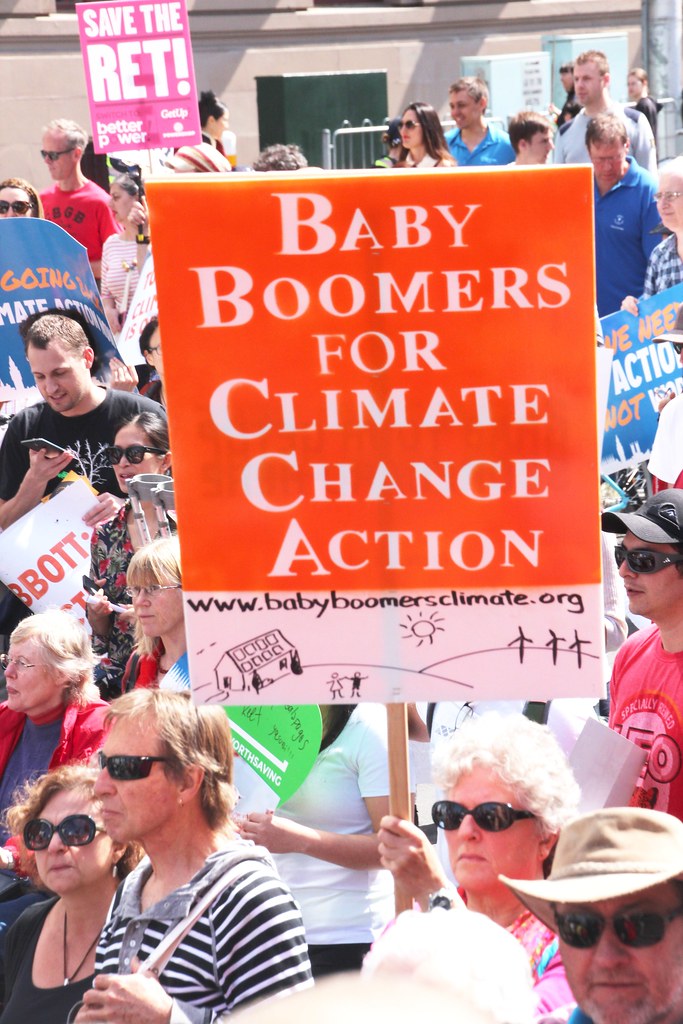
6. **The Baby Boom and Suburban Transformation: Shaping the American Landscape**The immediate post-World War II years ushered in an unprecedented demographic phenomenon known as the “Baby Boom,” marking a huge increase in births from 1946 to 1964. This massive surge in population, with the U.S. population growing by nearly 40 million, served as a powerful catalyst for profound societal changes, dramatically reshaping American communities and lifestyles.
Hand-in-hand with the Baby Boom came the “suburban boom.” Developers like William Levitt rapidly acquired land on the outskirts of cities, utilizing mass production techniques to construct modest, inexpensive tract houses. These “Levittowns” became emblematic of suburban life. The G.I. Bill further facilitated this migration by subsidizing low-cost mortgages for returning soldiers, making it often cheaper to buy a suburban home than to rent a city apartment.
These new suburban homes, characterized by “informal ‘family rooms,’ open floor plans and backyards,” were ideally suited for young, growing families. Neighborhoods earned nicknames like “Fertility Valley” and “The Rabbit Hutch,” reflecting the demographic explosion. Suburban life quickly centered on the nuclear family, with traditional gender roles often reinforced: mothers typically stayed home with the children, while fathers commuted to work in the cities. New schools and shopping centers sprang up to cater to these expanding communities.
Yet, this suburban dream was far from perfect, and its benefits were not equally distributed. While the G.I. Bill immensely helped white Americans to prosper and accumulate wealth, it significantly failed to deliver on that promise for veterans of color. This “wide disparity in the bill’s implementation” unfortunately exacerbated existing inequalities, directly contributing to “growing gaps in wealth, education and civil rights between white and Black Americans,” highlighting a deeply ingrained systemic injustice.
Furthermore, the seemingly idyllic suburban setting had a particularly confining effect on many (mostly white) women. Advice books and magazine articles of the era aggressively urged women to leave the workforce and embrace their roles solely as wives and mothers, promoting ideals like “Don’t Be Afraid to Marry Young” and “Femininity Begins At Home.” This expectation, while not new, began to generate considerable dissatisfaction among women who yearned for a more fulfilling life, a sentiment articulated by Betty Friedan in her 1963 book, “The Feminine Mystique,” which argued that the suburbs were “burying women alive.” This simmering discontent became a critical precursor to the rebirth of the feminist movement in the 1960s.
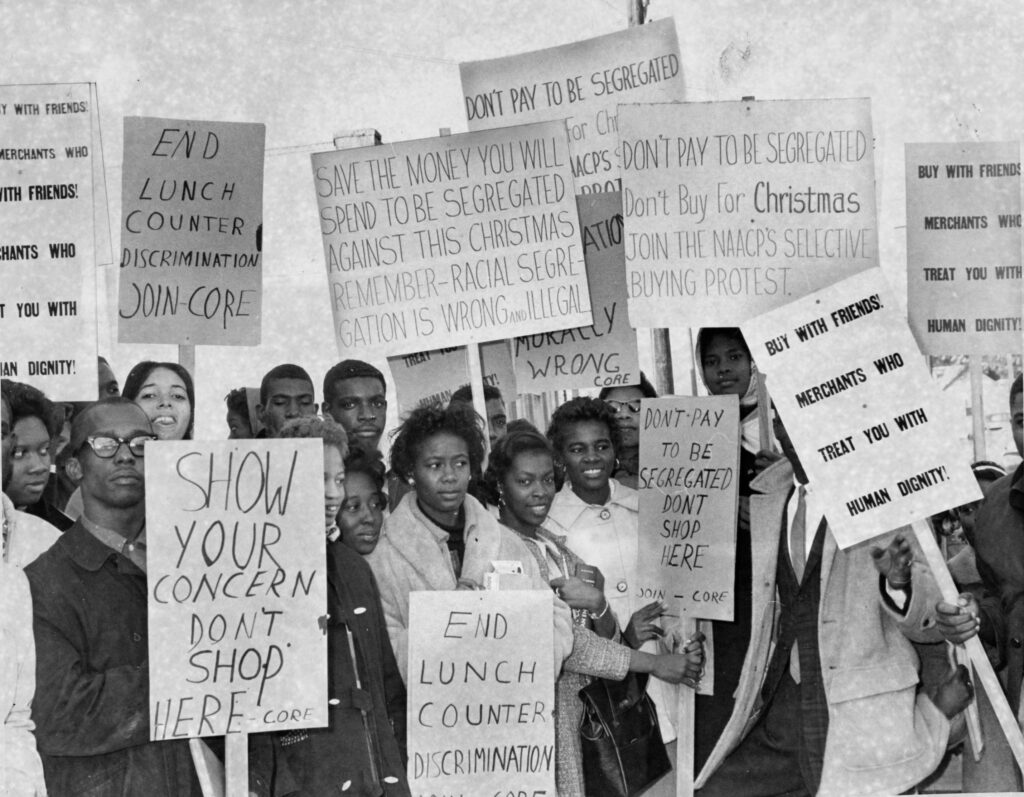
7. **The Genesis of the Civil Rights Movement: Challenging Segregation**The 1950s marked a crucial period where the Civil Rights Movement gained significant strength, fundamentally challenging racial segregation and discrimination across the United States. African Americans initiated a determined push for equal rights, laying the groundwork for a transformative era in American society.
A pivotal moment arrived in 1954 with the landmark Supreme Court ruling in Brown v. Board of Education. This decision, which declared that segregated schools were inherently illegal, directly contradicted the “separate but equal” doctrine. It was a monumental legal victory that not only began the dismantling of segregated public education but also “helped spark wider protests against unfair treatment” across various aspects of American life, giving momentum to the burgeoning movement.
The year 1955 witnessed another watershed event: Rosa Parks’ courageous refusal to give up her bus seat to a white passenger in Montgomery, Alabama. Her subsequent arrest ignited the Montgomery Bus Boycott, a year-long protest that saw the local African American community boycott the city’s public transit system. This sustained and unified action brought national and international attention to civil rights issues, demonstrating the power of organized nonviolent resistance.
During this tumultuous yet hopeful period, Dr. Martin Luther King Jr. emerged as an “important leader.” He eloquently advocated for nonviolent protest to fight for equality and an end to racial injustice. His leadership, coupled with the grassroots efforts and legal battles of the 1950s, established a robust foundation for the continued struggle for civil rights, setting the stage for the dramatic advancements and legislative changes of the following decade.” , “_words_section1”: “2000
Continuing our immersive journey through the 1950s, we now delve into the dynamic shifts that reshaped fashion, illuminated the silver screen, propelled scientific discovery, redrew geopolitical maps, ignited countercultural movements, captivated global audiences with sports, and forged lasting legacies in children’s entertainment. This second section meticulously unpacks the innovative forces and enduring impacts that further cemented the decade as a crucible of modernity, revealing how these aspects intertwined to craft the vibrant tapestry of the era.
Read more about: Joseph McNeil’s Enduring Legacy: How a Spark in Greensboro Ignited the Civil Rights Movement

8. **Fashion Revolution: From New Look to Youth Rebellion**The 1950s witnessed a profound transformation in fashion, moving beyond the austere practicality of the wartime era to embrace both a new sense of luxurious femininity and the rebellious spirit of an emerging youth culture. This period truly set the stage for how clothing could reflect both societal ideals and individual defiance, establishing a precedent for fashion as a powerful cultural barometer.
At the forefront of this revolution was Christian Dior, whose iconic 1947 collection, dubbed ‘The New Look,’ redefined women’s silhouettes. Utilizing a wealth of post-war resources, Dior dramatically reimagined women’s clothing, introducing voluminous dresses that not only represented wealth but also projected a new sense of power and elegance. His designs, famously using 80 yards of fabric for a single dress, emphasized an hourglass shape with wide shoulders, a tight waistline, and full skirts, a look that would heavily influence subsequent collections and firmly reestablish Paris as the undisputed fashion capital.
Other visionary designers also left an indelible mark on the decade. Spanish designer Cristobal Balenciaga, renowned for his attention to color and texture, introduced groundbreaking silhouettes such as sack dresses, heavy volumes, and balloon skirts. He was known for evolving from tailored designs to more shapeless forms, always maintaining a masterful sense of proportion and balance. Meanwhile, Coco Chanel, returning to the fashion scene, championed functional, luxurious clothing, believing that true luxury stemmed from comfort, and famously integrated accessories like pearl necklaces into her unique aesthetic. She challenged the prevailing ideals, advocating for designs that represented women’s resilience and active roles in society post-war.
Beyond haute couture, the 1950s celebrated the ‘birth of the teenager’ as a distinct demographic, whose burgeoning identity was inextricably linked to the rise of rock and roll music and a rebellious youth fashion. This new style marked a significant departure from previous generations, where teenagers had dressed similarly to their parents. In the UK, the ‘Teddy boy’ became an anti-authoritarian style icon, while in America, ‘Greasers’ occupied a similar social position, embracing an overtly ual nature in their dress. Men gravitated towards tight trousers, leather jackets, and slicked, greasy hair, while items like poodle skirts became popular for women, underscoring a distinct and defiant youth aesthetic.
Read more about: 14 Jaw-Dropping Moments from the ’60s That Forever Changed ‘Better Roles’ for Actresses (And Everyone Else!)
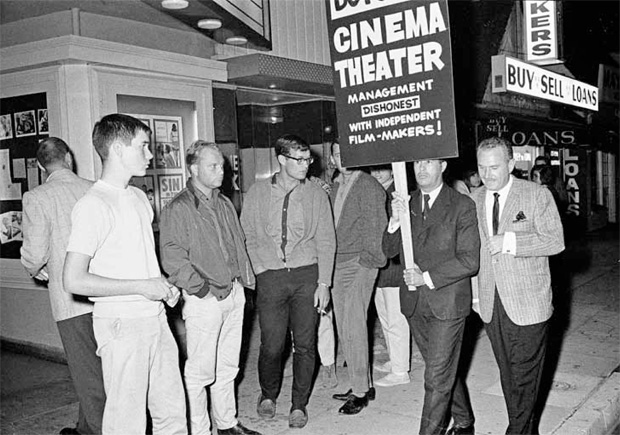
9. **Cinematic Storytelling: Hollywood Epics and European Renaissance**The mid-20th century proved to be a pivotal era for cinema, witnessing both a magnificent resurgence in European filmmaking and a transformative period for Hollywood as it adapted to new technologies and shifting audience preferences amidst the rise of television. Movies continued to shape public consciousness, offering compelling narratives and groundbreaking visual experiences.
Across the Atlantic, European cinema experienced a profound renaissance, emerging from the shadows of World War II with renewed vigor and artistic vision. Italian director Federico Fellini garnered international acclaim, winning the first foreign language film Academy Award for ‘La Strada’ and later another for ‘Nights of Cabiria,’ showcasing a new depth in storytelling. Sidney Poitier also achieved a significant milestone, becoming the first Black actor to receive an Academy Award nomination for Best Actor for his powerful performance in the 1958 film ‘The Defiant Ones,’ a truly groundbreaking moment for representation.
Hollywood, facing stiff competition from the small screen, responded with its own innovations and a focus on grander narratives. The decade saw the emergence of films that captured the spirit of a rebellious youth, with movies like ‘The Wild One,’ ‘Blackboard Jungle’ (which famously introduced rock and roll music to a national consciousness), and ‘Rebel Without a Cause’ profoundly affecting American culture and cementing stars like Marlon Brando and James Dean as icons of defiance. These films tapped into a growing sense of adolescent angst and a desire for individuality.
Technological advancements also reshaped the cinematic experience. Beginning in 1953 with ‘Shane’ and ‘The Robe,’ widescreen motion pictures became the industry norm, offering a more expansive visual spectacle. The 1950s also marked the “Golden Era” of 3D cinematography, providing audiences with an immersive new way to experience films. By the end of the decade, the epic ‘Ben-Hur’ grabbed a record 11 Academy Awards in 1959, giving a crucial new lease of life to Metro-Goldwyn-Mayer (MGM) and demonstrating Hollywood’s continued ability to captivate with monumental productions.
Even animated films flourished, with Walt Disney Studios presenting timeless classics such as ‘Cinderella,’ ‘Alice in Wonderland,’ ‘Peter Pan,’ ‘Lady and the Tramp,’ and ‘Sleeping Beauty.’ The decade also saw the memorable debut of the cartoon character Duck Dodgers in 1953, showcasing the lasting power of animation to create beloved figures and narratives that transcended generations.
10. **Scientific Frontiers: DNA, Vaccines, and the Dawn of the Space Age**The 1950s stood as a monumental decade for scientific discovery and technological innovation, forever altering humanity’s understanding of life itself, revolutionizing public health, and propelling humanity into the cosmos. These breakthroughs not only addressed immediate challenges but also laid foundational groundwork for countless future advancements.
One of the most profound discoveries of the century came in 1953 when James Watson and Francis Crick unveiled the double helix structure of DNA. This groundbreaking revelation revolutionized the field of genetics, providing an unprecedented insight into the fundamental building blocks of life. Their work opened up entirely new avenues for research, understanding inherited traits, and treating genetic diseases, marking a pivotal moment in biological science.
In the realm of public health, the decade delivered a monumental victory against one of the era’s most feared diseases. In 1955, Jonas Salk developed the polio vaccine, a medical marvel that brought hope to millions. This significant advance nearly eradicated a disease that had caused widespread fear, paralysis, and disability, offering a stark testament to the power of scientific dedication and global collaboration.
The global stage was dramatically altered in 1957 with the Soviet Union’s launch of Sputnik 1, the first artificial satellite to orbit Earth. This event sent shockwaves through the United States, igniting the Space Race and compelling the U.S. to rapidly accelerate its own space efforts, leading to the creation of NASA in 1958. This intense competition between the superpowers spurred unprecedented investment in science, technology, engineering, and mathematics (STEM) education and research, pushing the boundaries of human ingenuity.
Alongside these headline-grabbing achievements, the 1950s also saw rapid advancements in computing. The introduction of the first commercial computer, UNIVAC I, in 1951, signaled the dawn of the digital age. This development, while seemingly niche at the time, laid the essential groundwork for the information revolution that would define future decades, proving that the decade was not only about grand discoveries but also about incremental technological progress.

11. **The Tide of Decolonization: A New World Map**The 1950s ushered in a transformative era of global politics, characterized by a powerful wave of decolonization that fundamentally reshaped the world map and challenged the long-established imperial order. As former colonies in Africa and Asia gained independence, new nations emerged, asserting their sovereignty and forever altering international relations.
Following the devastation of World War II, the global political landscape shifted dramatically. The United States and the Soviet Union emerged as superpowers, and the newly formed United Nations played an increasingly influential role in promoting international cooperation and managing the complex process of transitioning former colonies to independent states. This framework provided a platform for these emerging nations to assert their place on the global stage.
Throughout the decade, numerous nations achieved self-governance. A landmark moment came in 1957 when Ghana, under the leadership of Kwame Nkrumah, became the first sub-Saharan African country to gain independence from British rule, inspiring other African nations to pursue their own freedom. Kenya, too, fought a protracted struggle for independence during this period, ultimately achieving it in the early 1960s, but its intense fight was a defining feature of the decade’s decolonization narrative.
In Southeast Asia, Vietnam’s struggle against French colonial rule reached a critical juncture. The decisive French defeat at Dien Bien Phu in 1954 led to the Geneva Accords, which provisionally divided Vietnam at the 17th parallel. This division, with a communist North and a Western-aligned South, tragically set the stage for future conflict, highlighting the complexities and enduring tensions inherent in the decolonization process.
The emergence of these new nations had a profound impact on global affairs. They quickly joined the United Nations, forming a significant bloc that championed self-determination and often sought a non-aligned path between the Western and Eastern blocs of the Cold War. This period not only redrew borders but also introduced new voices and perspectives into international diplomacy, challenging the old Eurocentric world order and laying the foundations for a truly globalized political system.
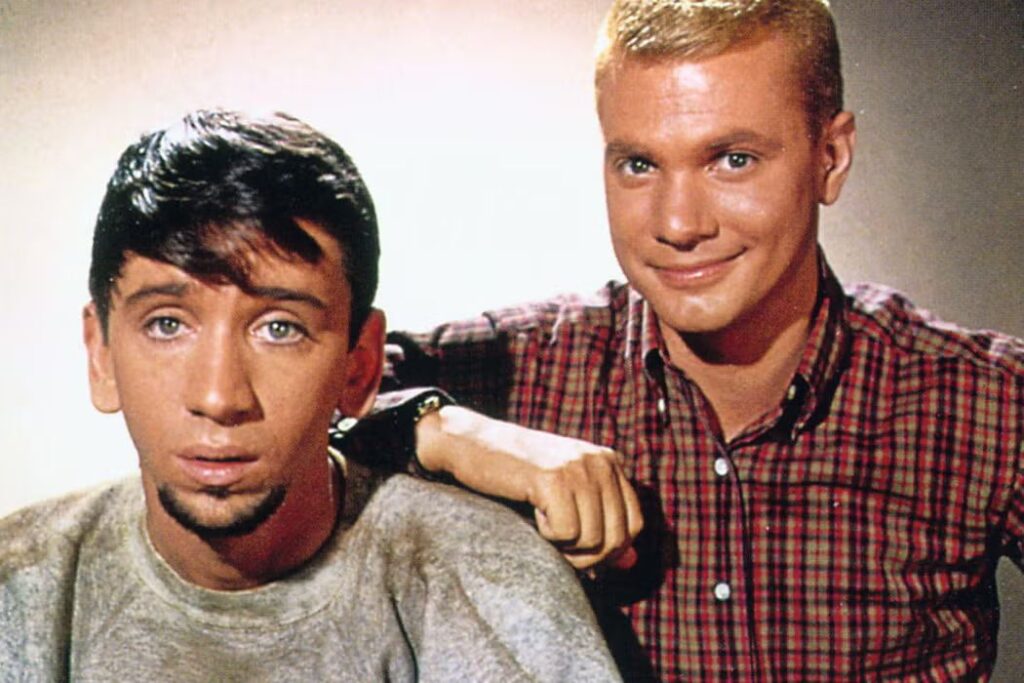
12. **Counterculture’s First Stirrings: The Beat Generation**Amidst the prevalent cultural conformity and burgeoning consumerism of the 1950s, a nascent countercultural movement began to take root, subtly yet powerfully challenging societal norms and laying the intellectual and artistic groundwork for the more explosive social upheavals of the following decade. This movement, primarily embodied by the ‘Beat Generation,’ offered a stark contrast to the idealized suburban life.
The “Beatnik movement,” as it became known, emerged from literary circles and coffee houses, primarily in New York and San Francisco. Its adherents, often writers, artists, and intellectuals, rejected mainstream materialism and conservative values, advocating instead for personal freedom, spiritual liberation, and a nonconformist lifestyle. Their influence, though initially confined to bohemian circles, gradually permeated popular culture, bringing the concept of counterculture into the mainstream consciousness.
Through their art and literature, Beat writers like Jack Kerouac, Allen Ginsberg, and William S. Burroughs explored themes of existentialism, jazz, drug use, uality, and Eastern religions, providing a voice to a generation disillusioned with the status quo. Their raw and unfiltered expressions of experience directly challenged the sanitized depictions of American life prevalent in media, creating a significant cultural dissonance that resonated with those seeking deeper meaning.
This early countercultural movement was instrumental in questioning the rigid social structures and expectations of the 1950s. The Beatniks’ embrace of alternative lifestyles, their critique of consumerism, and their emphasis on individual authenticity provided an essential precursor to the civil rights, anti-war, and feminist movements of the 1960s. They demonstrated that even in an era of apparent uniformity, a powerful undercurrent of dissent and creative exploration could flourish, shaping the trajectory of American cultural evolution.
13. **Global Arenas: Major Sporting Events of the Decade**The 1950s were a vibrant period for international sports, bringing together athletes and nations in displays of prowess and camaraderie, even amidst the backdrop of Cold War tensions. Major sporting events captured global attention, fostering national pride and providing memorable moments that transcended political divides.
Olympic Games, a pinnacle of international competition, were held four times during this decade. The Winter Olympics took place in Oslo, Norway, and the Summer Olympics in Helsinki, Finland, both in 1952, showcasing athletic talent from around the world. Four years later, the Winter Games went to Cortina d’Ampezzo, Italy, and the Summer Games to Melbourne, Australia, in 1956, further cementing the global reach and prestige of these quadrennial events.
Football, or soccer, also enjoyed significant international prominence with three FIFA World Cups. Uruguay triumphed in Brazil in the 1950 World Cup, marking a memorable upset. West Germany secured victory in Switzerland in 1954, demonstrating a remarkable post-war resurgence. However, it was the 1958 World Cup in Sweden, won by Brazil, that truly etched itself into history, notably for marking the spectacular debut on the world stage of a then largely unknown 17-year-old Pelé. His emergence heralded a new era in football and solidified his status as a legendary figure.
Beyond these marquee events, the 1950s also saw the inaugural season of Formula One, officially launching a new era of international motorsport that would captivate audiences with its blend of speed, technology, and daring drivers. This expansion of global sports offerings underscored a growing appetite for diverse athletic competitions, bringing new forms of entertainment and excitement to a global audience.
These major sporting events, while serving as thrilling competitions, also functioned as powerful cultural touchstones, reflecting the aspirations and rivalries of nations. They offered a shared experience, allowing people worldwide to unite in appreciation of human achievement, creating moments of collective joy and indelible memories that defined the spirit of the decade.

14. **Imagination Unleashed: Children’s Literature and Iconic Comics**For the youngest members of society, the 1950s was a decade brimming with imaginative new worlds, introducing beloved characters and stories in children’s literature and comics that continue to enchant generations. This period nurtured creativity and offered a rich tapestry of entertainment that became foundational to childhood memories.
The realm of children’s literature saw the release of several enduring classics that have since become household names. Dr. Seuss’s ‘The Cat in the Hat,’ published in 1957, revolutionized early reading with its playful rhymes and memorable characters. E.B. White’s timeless ‘Charlotte’s Web’ (1952) captivated young readers with its heartwarming tale of friendship, while Crockett Johnson’s ‘Harold and the Purple Crayon’ (1955) inspired creativity with its simple yet profound narrative. These books fostered a love for reading and storytelling.
In the world of sequential art, the 1950s was a golden age for comics. The long-running and immensely popular comic strip ‘Peanuts,’ created by Charles M. Schulz, made its debut, quickly becoming “the most successful comic strip of all time” with its relatable characters like Charlie Brown and Snoopy. Beyond the funny pages, numerous iconic comic book characters were introduced, including the Martian Manhunter, The Flash (Barry Allen), Asterix, Marmaduke, Dennis the Menace (both American and British versions), the Smurfs, and Astro Boy, each leaving a distinctive mark on popular culture and sparking the imaginations of countless children.
Complementing these literary and artistic creations were other cultural mainstays that added to the decade’s unique charm. Pez candies, with their distinctive dispensers, were released and quickly became well-known pop culture items. The jukebox, a staple of diners and entertainment venues, continued its reign as a popular source of music. Furthermore, distinct fashion trends like poodle skirts for women and leather jackets for men, already mentioned, showcased a burgeoning youth culture, often accompanied by the sound of rock and roll.
The growing prominence of motorcycle clubs also indicated a flourishing leisure and youth culture, providing another avenue for expression and community among younger generations. These diverse forms of entertainment and cultural expression collectively shaped the landscape of childhood and youth in the 1950s, creating a vibrant and memorable period for young people.
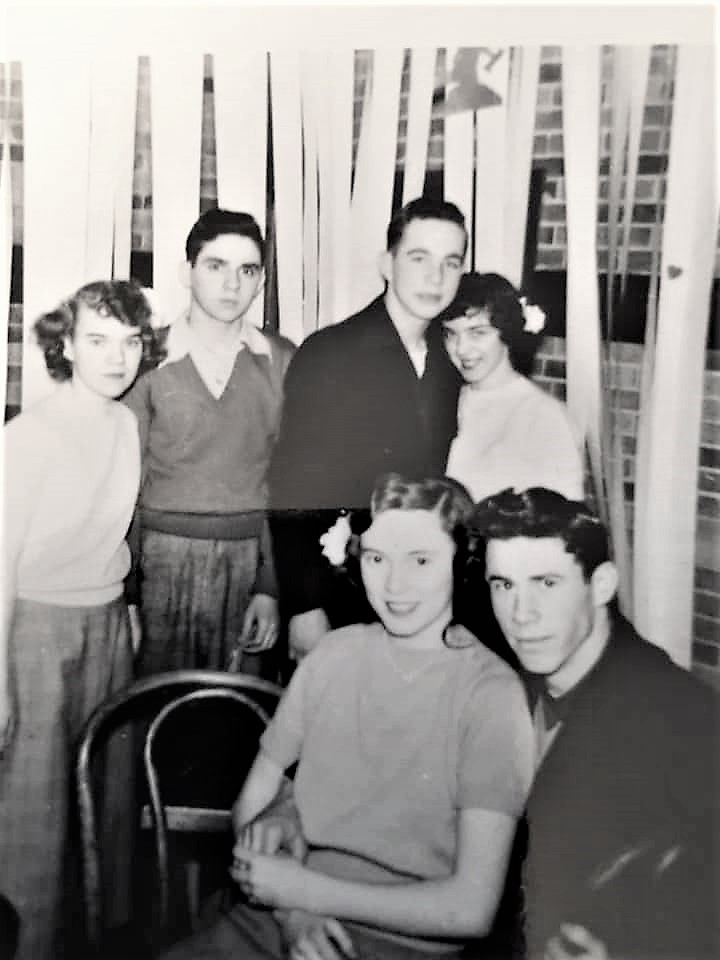
15. **Evolving Roles for Women: Beyond the Domestic Sphere**While the post-war ideal often painted a picture of suburban domesticity for women, the 1950s was a decade of simmering change and evolving expectations, subtly laying the groundwork for future feminist movements. Beneath the surface of traditional gender roles, shifts in the workforce and society began to challenge long-held assumptions about women’s place.
Although the era heavily promoted the image of women as wives and mothers, often urged to leave the workforce, the reality was more complex. More women did enter the workforce during this period, seeking opportunities beyond the home. However, they frequently faced significant limitations on their careers, encountering barriers to advancement and often relegated to specific ‘female’ occupations. This push and pull between societal expectations and burgeoning professional aspirations created a unique tension for many.
This underlying dissatisfaction was famously articulated by Betty Friedan in her seminal 1963 book, ‘The Feminine Mystique,’ which, though published later, powerfully captured the widespread discontent among women in the 1950s. Friedan’s work “sparked new debates about women’s place in society” and directly “challenged the idea that women should only be housewives and mothers,” giving voice to a collective yearning for a more fulfilling life beyond domestic confines.
A groundbreaking development that would profoundly impact women’s autonomy emerged at the close of the decade: the availability of the birth control pill in 1960. This revolutionary medical advance provided women with unprecedented “more control over family planning and their lives.” This newfound control over reproductive choices was a monumental step, empowering women to make more deliberate decisions about their education, careers, and personal trajectories.
Ultimately, the societal expectations and the emerging realities for women in the 1950s created a critical dynamic of change. The dissatisfaction bred within the suburban ideal, coupled with increased participation in the workforce and the advent of reproductive control, acted as potent catalysts. These shifts were not merely isolated events but crucial precursors that directly contributed to the powerful rebirth of the feminist movement in the 1960s, evolving the conversation from quiet discontent to a resounding demand for equality and self-determination.
The 1950s, far from being a static era of simple nostalgia, emerges as a complex and vibrant decade—a true pivot point in modern history. From the geopolitical chess match of the Cold War to the revolutionary beats of rock and roll, from the quiet discontent in suburbia to the roar of civil rights and decolonization, this period laid down foundational structures and ignited transformative movements that continue to shape our world. Its legacy is one of contradictions and dynamism, a testament to an era that was anything but ordinary.



